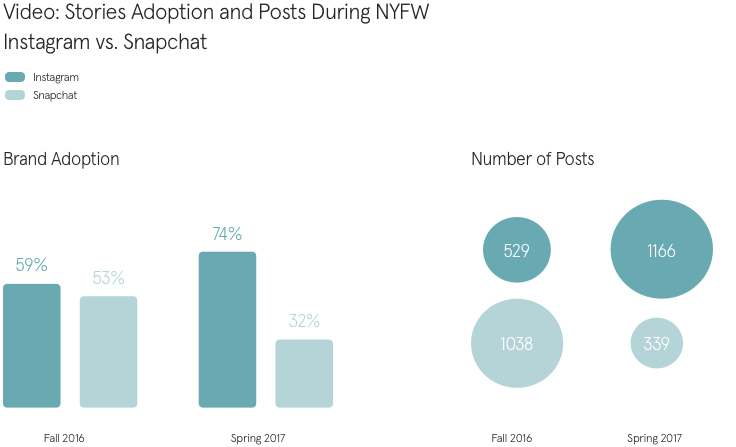Tips
What is social media marketing?
Your social media marketing journey starts here. Learn the what and the why—as we launch a business to test our tactics.<br>

So you’re thinking about marketing on social media?
Here’s two things you should know:
- Get it right and it could be a huge win for your company.
- Make no mistake: it’s going to be a challenge.
This article will give you a rundown of what social media marketing is, why you should do it, and the modern day challenges.
We’ll also be doing something different to other social media marketing guides. We’ll be putting our tips to the test to build a social media marketing presence from scratch.
How?
By inventing a business called Brainbeats and starting social media accounts to promote it.
Ready to take the plunge with us? Great—let’s get started.
What is social media marketing?
Social media marketing is the act of promoting a product or service through the use of social media platforms and websites, such as Facebook, Twitter, and Instagram.
That’s one broad definition. But within it, there are countless marketing objectives, strategies, and ways to succeed. You can use it to gain brand awareness, build an online following, run ads, and much more.
The basic idea: post content that people will engage with and share, allowing your business to reach new customers.
But what kind of content? Who’s it for? Where do I start? If you’re itching for answers to these questions, head straight for the social media marketing strategy chapter.
Still not sure if it’s right for you? Let’s talk about why you should try.
What are the benefits of social media marketing?
Flashback time. The year is 1998.
Back then if you took your cardboard box business online, you were a pioneer—one of the first people in your trade to plonk a flag on the World Wide Web. Your business had visibility. People could find you. Easier times, right?
Now fast forward to the present. There are millions of websites, so the internet has developed content filters—two of them, to be precise.
One is Google, which uses a combination of machine learning and black magic to conjure up its first page of results. This is prime internet real estate.
Getting your cardboard box business to show up when people search ‘cardboard box’ on Google is not impossible, but it is very hard.
Your other option? The other great filter of the internet: social media.
In case you haven’t heard, social media is a pretty big deal. Here’s three crazy figures:
3.196 billion people use social media. That’s nearly half of the entire world logging into a tiny handful of websites. In other words, your customers are definitely on there somewhere.
Internet users have around five social media accounts each. People are hungry for social media content. And they want a healthy balance of the news, tips, and visuals offered across different channels. This gives you a ton of options to reach new customers.
$40 billion was spent on social media ads in 2016. Or twice the GDP of Iceland. Businesses wouldn’t be dropping that kind of cash if it wasn’t working.
So if your cardboard box business makes it on social media, you won’t have just sold a lot of boxes. You’ll be the king of cardboard, with a box throne and a staff of empty toilet rolls.
Excited? Great—you should be.
But we’re overdue for a ‘but.’
So what’s the catch?
When social media really started kicking off in the late 00’s, describing it as a “marketing unicorn” would be an understatement.
Suddenly, there was a place where any idea or business could get an audience of thousands by capturing people’s imaginations—or flashing enough cat pics. Best of all, it was pretty much a free advertising channel. Businesses could grow an audience for next to nothing.
But today? It’s a little more complicated. Hence all the guides on social media marketing.
So let’s go through some of the challenges you should know about.
That said, there are other tools to help automate your social media marketing process in more legitimate ways.
1) It’s crowded
You know how I said that the huge number of people on social media is a massive business opportunity? Well, it’s also an obstacle.
Over 20,000 business accounts are created every single day on Facebook. Over 500 million tweets are sent daily. And an estimated 71% of US businesses are on Instagram in 2018, which is up from 48% in 2016.
That’s a lot of people trying to sell stuff at once—and chances are that most of your biggest competitors are on there too.
Spy on them. Find out what you’re up against, and nab an idea or two to get you started. Maybe they use special offers to get more Facebook likes, or they spice up their Stories with an Instagram photo editor. Don’t worry, we won’t tell anyone.
2) Organic social media reach is dead
There was an era Before Companies (BC) when you logged into Facebook and just saw your friends talking to each other. Then the ads started.
Nowadays, scrolling through your newsfeed is more like elbowing your way through an alien flea market from a Star Wars film. And not one of the good Star Wars films.
In an attempt to address this imbalance—and ultimately, to make more money—Facebook has reduced the organic reach of publishers and companies. These days, it’s basically zero.
Or in plain English: if you’re a business posting on Facebook, start loosening those purse strings.
This is great for seeing more updates from your friends, but less ideal from a marketing point of view.
And while some are jumping ship to the relative organic safety of Instagram, guess what: Facebook also owns Insta, and they’ve already got similar plans over there.
Still, social media marketing remains one of the most cost effective marketing strategies out there—so all is not lost. You just have to be smarter, more tactical, and more willing to invest time and money.
But declining organic reach is only one challenge facing social media marketers.
3) The algorithms keep changing
I know what you’re thinking: “Did he actually just drop the word ‘algorithms?’ I came here for social media marketing advice, not a computer science convention.”
But despite the scary word, it’s easy to explain what a social media algorithm does—it determines what content you see, and in which order. Simple, right? So what’s the problem?
No one has ever fully figured out how they work.
They also change all the time. So even if you were killing it on Facebook in 2014, chances are you’ll need a very different approach to stay relevant today.
We’ll cut through the algorithm voodoo on each social media platform later on in the guide, so don’t panic.
4) Platform overload
Does LinkedIn work for marketing as well as recruitment? Isn’t Snapchat just for sending nudes? Hasn’t the Periscope been largely obsolete since World War I?
All valid questions. Because with so many social media platforms coming into fashion—and sometimes going straight back out again—it can feel impossible to stay on top of which are hot, and which are flops.
And there’s nothing worse than nailing a marketing strategy on one channel, only for it to suffer an abrupt case of un-coolness.
Take Snapchat, for example: since Instagram launched its Stories feature in 2016, it has annihilated Snapchat in terms of daily users and marketing potential. And brands have noticed—check out those bar charts:
If ‘Snapchat Marketing Strategist’ is a real job title, it might not be for much longer.
That’s not to say the social media path less marketed isn’t worth your time. A Reddit Rumpelstiltskin can easily weave memes into leads, while a Pinterest wizz has no problem turning pins into wins.
But for any successful social media marketing project, two things are essential: a deep understanding of the channel, and an acute awareness of how your product is compatible with it.
If you’re new to social media marketing, you probably won’t have this knowledge yet. So it makes sense to start with the biggest, safest, and most widely used channels:
- Facebook is the biggie, and probably where you should start.
- Twitter is a different kettle of fish, but one that’s been boiling for some time now.
- Instagram is more of a newcomer, but it’s simply become too massive to ignore.
And in case you’re still wondering, the answers to those questions at the start of the section are yes, no, and wrong type of periscope.
Our social media marketing experiment
Ever noticed how most social media marketing guides are written by marketing giants who already have huge social followings?
Well, it makes sense. They have the proven track record, resources, and expertise to be recognized as social media icons—the real authorities on the topic.
But this makes it difficult for them to answer some questions you may have as you spread your social media wings for the first time:
- What if I don’t have many resources?
- What if I lack an established network to kickstart my efforts?
- What’s it like to build a following from scratch now, as opposed to back in 2010 when they did it?
We wanted to answer these questions as honestly as we could, to go where no previous social media marketing guide has gone before. So we’ve decided to put ourselves in the shoes of a company who’s just starting its social media journey.








.png)
